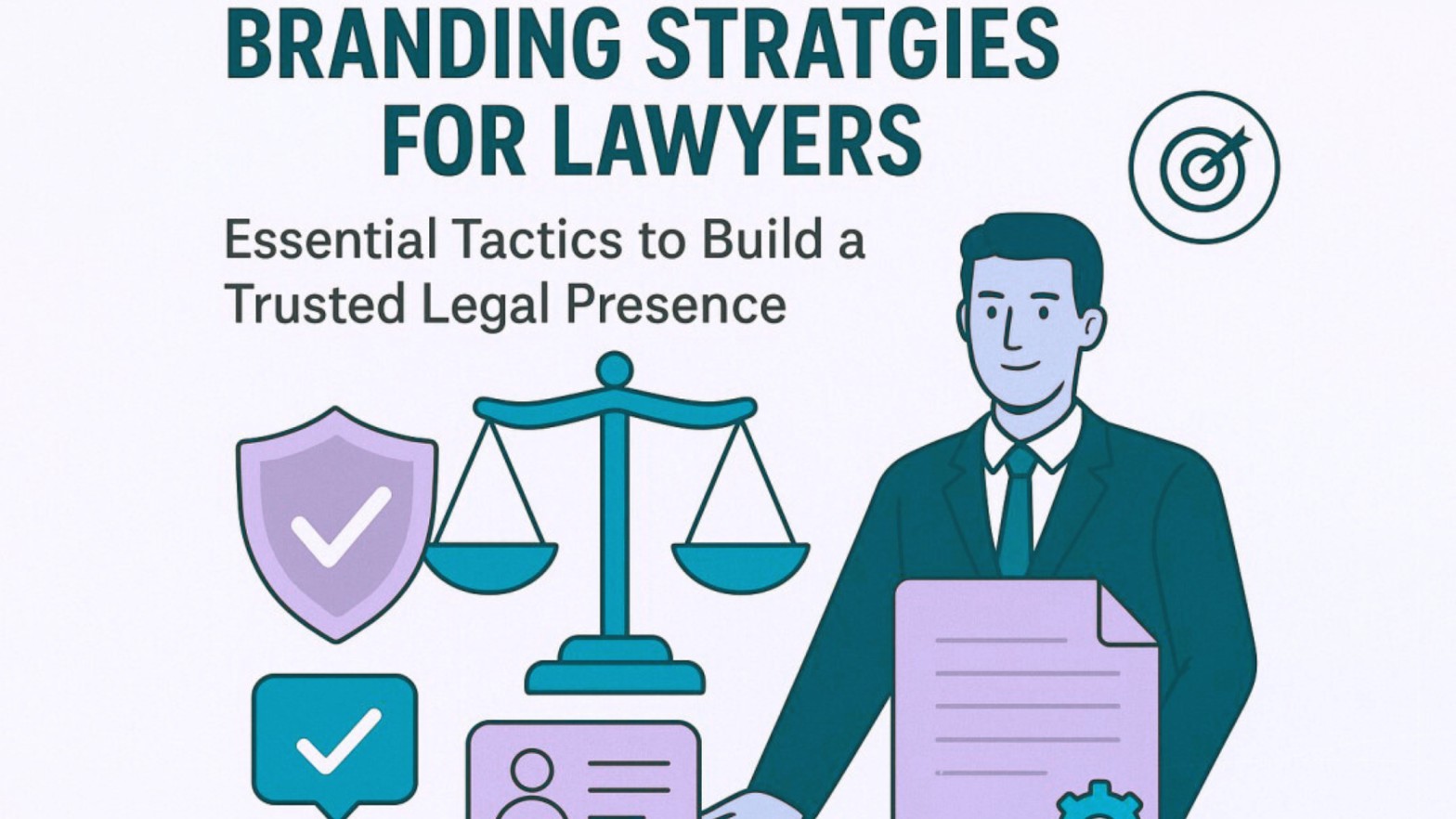In the legal services industry, trust and credibility are paramount. Effective branding enables law firms to differentiate themselves, foster lasting client relationships, and establish a robust reputation that drives referrals and fosters growth. This guide breaks down essential branding tactics lawyers can apply immediately to strengthen their presence and credibility.
Understanding Legal Branding
Branding for lawyers goes far beyond logos and taglines. It is the combination of values, reputation, communication style, and client experiences that define how a firm is perceived. Strong branding builds recognition, fosters loyalty, and positions your firm as both authoritative and approachable.
Why Branding Matters in Law
- Differentiates you in a crowded market
- Builds client trust and justifies premium fees
- Enhances referrals through reputation
- Shapes long-term client relationships
Case Example: A clear example of branding done right comes from Diamond & Diamond, one of Canada’s most prominent firms. Their evolution from a personal injury practice into a multi-service legal brand shows the power of consistent messaging and bold marketing. As this feature on Jeremy Diamond highlights, the firm’s ability to align leadership vision, branding, and client-focused service has been central to its rapid growth and strong reputation in a competitive marketplace.
As Jordan Power of Grey Smoke Media notes, “The strength of a legal brand comes from consistency and clarity. By shaping a message that clients instantly recognise and trust, firms like Diamond & Diamond have been able to expand their reach while maintaining credibility.”
Tactic 1: Define Your Unique Value Proposition (UVP)
Your UVP explains why clients should choose you over competitors. Avoid generic “experienced lawyer” claims. Instead:
- Highlight niche expertise (e.g., class actions, corporate compliance)
- Showcase case results and client outcomes
- Emphasise unique service approaches (e.g., client-first communication, technology-driven efficiency)
Action Step: Write a one-sentence UVP and ensure it appears consistently across your website, profiles, and client materials.
Tactic 2: Build a Consistent Visual & Verbal Identity
Your visual identity (logo, colours, fonts) and voice (formal, approachable, authoritative, compassionate) should reflect your UVP.
- Keep designs professional and simple
- Use a consistent tone in all communication: website copy, emails, and social posts
- Audit regularly for alignment across every touchpoint
Action Step: Create a style guide that defines visuals and tone, and ensure your team follows it in every interaction.
Tactic 3: Leverage Digital Presence as a Branding Tool
Your website and social media profiles are your digital first impression.
- Website must be fast, mobile-friendly, and clearly show practice areas
- Add attorney bios, testimonials, and case results to build credibility
- Use social platforms (LinkedIn, Facebook, Twitter) to share insights, not just promotions
Action Step: Review your homepage and LinkedIn profile today. Does it immediately communicate your firm’s expertise and values?
Tactic 4: Use Content to Demonstrate Authority
Content marketing turns expertise into credibility.
- Publish thought leadership articles that answer common client questions
- Host webinars or short videos breaking down complex legal issues
- Maintain a blog that addresses frequent legal concerns in plain language
Action Step: Plan one new piece of educational content each week (article, video, or client guide).
Tactic 5: Manage Your Reputation Proactively
Online reviews and testimonials strongly influence client decisions.
- Ask for reviews after successful cases
- Respond professionally to both positive and negative feedback
- Showcase top testimonials on your site and social channels
Action Step: Automate review requests with follow-up emails and track responses monthly.
Tactic 6: Strengthen Brand Through Networking & Community
Branding extends beyond digital. Your involvement in professional and community spaces shapes perception.
- Join legal associations and speak at events
- Engage in community initiatives (charity, local workshops, sponsorships)
- Build referral partnerships with complementary professionals
Action Step: Schedule at least one networking or community engagement activity per month.
Tactic 7: Measure and Refine Branding Efforts
Branding only works if it delivers results. Track:
- Website traffic and branded search queries
- Social media engagement and follower growth
- Client acquisition sources and costs
Action Step: Review these metrics quarterly and adjust your strategy to double down on what’s working.
Future-Proofing Legal Branding
The future of branding lies in personalisation, technology, and authenticity. AI-driven insights, client-specific messaging, and omnichannel consistency will shape how firms connect with clients. Firms that combine professionalism with transparency will lead the market.
Conclusion
Branding is not about appearances; it’s about building lasting trust. By defining a clear value proposition, maintaining a consistent identity, leveraging digital platforms, and managing reputation, lawyers can create powerful brands that attract and retain clients.
The lesson from successful firms like Diamond & Diamond is clear: when branding aligns with vision and client service, it becomes one of the strongest drivers of sustainable growth.










